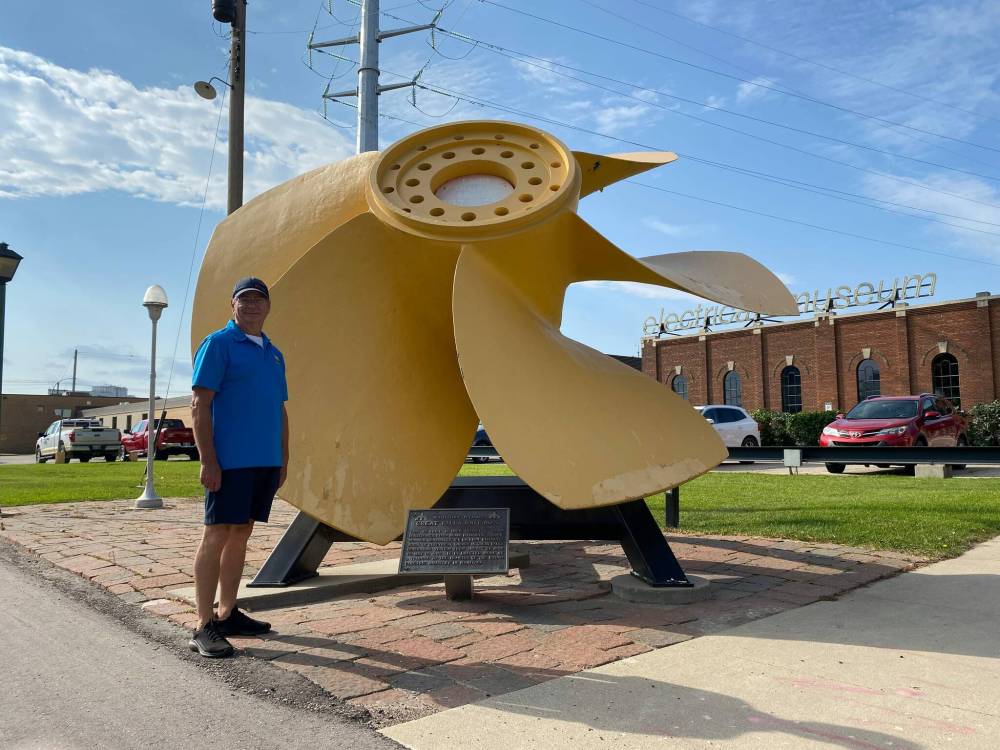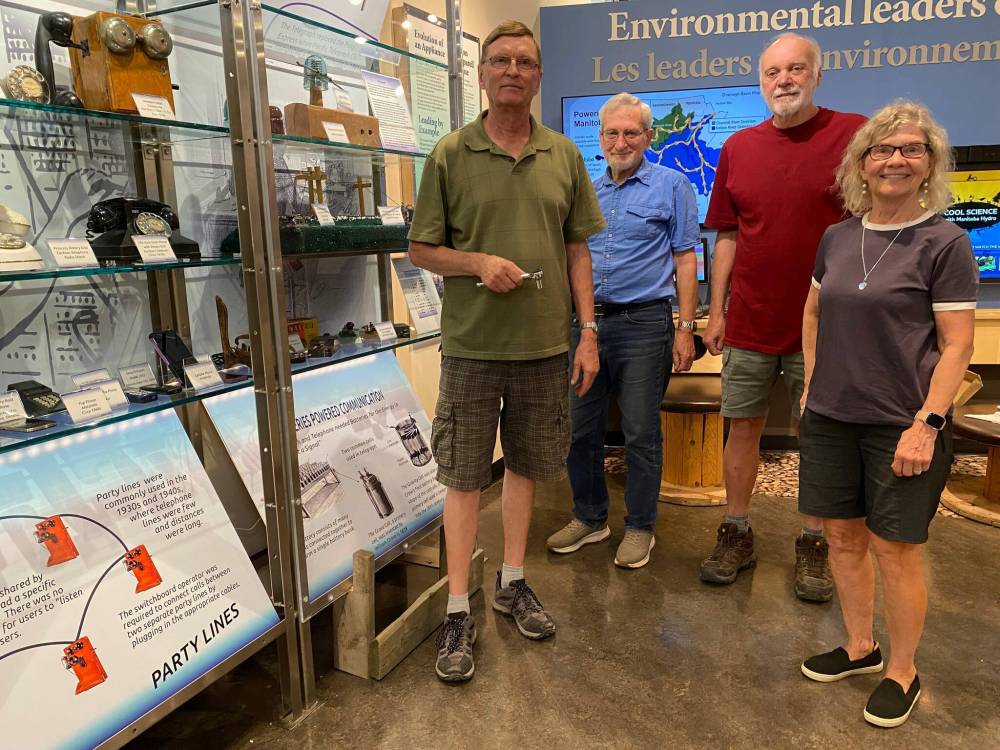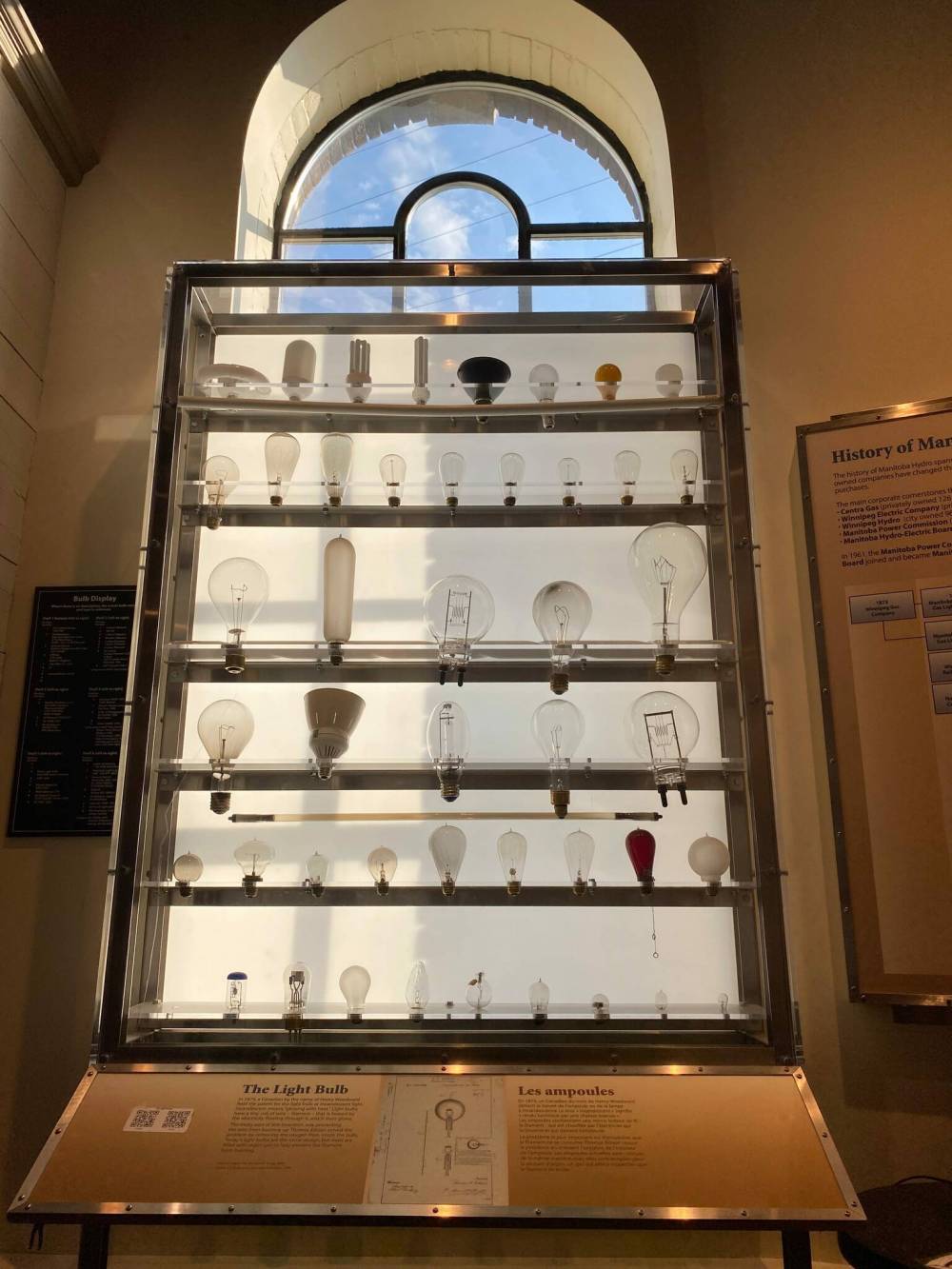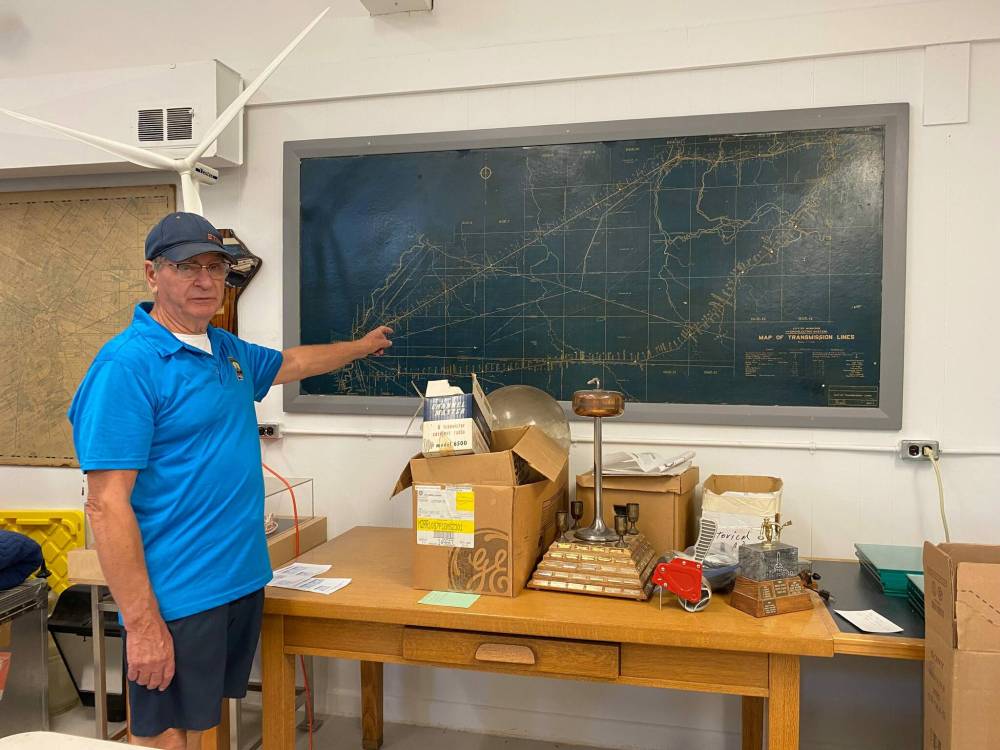Shining a light on local history
Manitoba Electrical Museum a treasure trove of local history, artifacts
Advertisement
For a jolt of local history, look no further than the Manitoba Electrical Museum.
Since it first opened in 2001, the Manitoba Electrical Museum and Education Centre has provided visitors with an in-depth history of electrical power in Manitoba going back to the early 20th century.
“Our goals are to expand on educating people on electricity in Manitoba,” said Gracie Ramsfield, assistant curator and volunteer co-ordinator. “I think there’s so much hidden history in Manitoba. There really is so much that has yet to be uncovered. On the electricity side of things, we do focus on the technology, but there is also a lot to be said of the social history of electricity.”

Photo by Sheldon Birnie
Dave White, a retired hydro lineman, is a longtime volunteer with the Manitoba Electrical Museum (680 Harrow St.).
The museum itself is situated at 680 Harrow St. in an old Hydro powerhouse, and features displays regarding the history of hydro-electrical development in Manitoba. Hundreds of artifacts related to electrical history, such as old Hydro meters, rectifiers, radiant heaters, appliances, and a truly astonishing array of lightbulbs, are on display, while thousands more are catalogued and kept in storage.
“The museum here has in the order of 220 or 230 artifacts on the display,” said Wayne Dejaegher, a retired engineer and longtime volunteer with the museum. “But 93 per cent of our collection is in storage in our facility off McGillivray Boulevard. We’re always looking at opportunities to put our collection on display.”
“In a museum, the rule of thumb is 10 per cent of your collection is on display at any time, so you want to get artifacts out when you can, to keep things from being static,” said Pam McKenzie, a former museum administrator who continues to volunteer with the organization. “We have a wind turbine, too, for example, which is not on the floor, for a bit of a look to the future.”
Lately, the museum has been tapped by the local film industry to provide props for films and television shows filmed in the province that are seeking to recreate particular periods of time. Old vehicles, radios, appliances, and more have been rented out to provide authenticity to the productions.
While the museum was started by Manitoba Hydro, and continues to receive support from Hydro, including the use of the space, which Hydro owns, technically the museum is its own entity.

Photo by Sheldon Birnie
Dozens of volunteers work with the public and behind the scenes at the Manitoba Electrical Museum.
“We’re volunteer run, and we only have two who aren’t Manitoba Hydro retirees,” Ramsfield said.
Dave White is a retired Hydro lineman and longtime museum volunteer. White grew up in Whitemouth, Man., and started working for Hydro in 1969.
“As a kid, we used to, when we’d see the Hydro guys coming by in the Bombardier, we’d run out and catch a ride with them,” White said. “I always liked climbing, as a kid, too. I made my own belt. It’s kind of neat, a lot of the stuff that’s coming in now, I actually worked with when I started working. People go, ‘What, are you 100 years old?’ No!”
White, Dejaegher, and other volunteers give their time to the museum for a number of reasons, not least that it provides an opportunity to be social, active, and help educate Manitobans about a subject near and dear to their hearts.
“It kind of brings back what we used to do,” said White, who retired in 2002, getting involved with the museum the same year. “When you think of how much things have changed in the last 40 years, it’s amazing.”

Photo by Sheldon Birnie
The Manitoba Electrical Museum is home to over 6,000 artifacts related to the history of electricity in the province, including more than a few lightbulbs from every era.
Throughout the school year, the museum hosts hundreds of Grade 6 and 9 students.
“That school outreach is a big part of what we do,” Ramsfield said. “Those tours vary from an hour and a half to two hours. They’re fairly intense. There’s a big focus on safety for Grade 6.”
“Kids learn to put together batteries and make things work,” White said. “It’s hard to get them outta here sometimes.”
The museum also has an archive of over 17,000 photos documenting construction of major projects, new innovations, and day-to-day life of times gone by.
“Manitoba has a very interesting social history. That is something that, eventually, we want to emphasize, as well,” Ramsfield said. “How technology was so beneficial, but there are lots of layers to that, in how it has influenced our society. So I’m excited about it. I think others should be, too.”

Photo by Sheldon Birnie
Dave White, a retired hydro lineman and longtime volunteer with the Manitoba Electrical Museum (680 Harrow St.) shows off a map from 1932 detailing the hydro transmission line from Pointe du Bois dam to the Rover Avenue station.
The Manitoba Electrical Museum and Education Centre is open Tuesday through Saturday, from 1 to 4 p.m. For more information, visit electricalmuseum.ca

Sheldon Birnie
Community Journalist
Sheldon Birnie is a reporter/photographer for the Free Press Community Review. The author of Missing Like Teeth: An Oral History of Winnipeg Underground Rock (1990-2001), his writing has appeared in journals and online platforms across Canada, the U.S. and the U.K. A husband and father of two young children, Sheldon enjoys playing guitar and rec hockey when he can find the time. Email him at sheldon.birnie@freepress.mb.ca Call him at 204-697-7112
Our newsroom depends on a growing audience of readers to power our journalism. If you are not a paid reader, please consider becoming a subscriber.
Our newsroom depends on its audience of readers to power our journalism. Thank you for your support.




